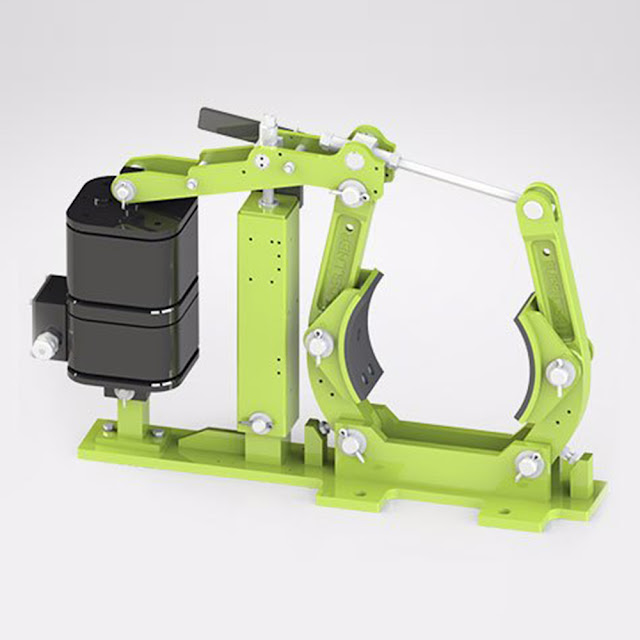Introduction
Ever wonder what goes into making your car stop just in the
nick of time? Enter the world of EBA brakes. EBA stands for Emergency Brake Assist, a critical safety feature in modern vehicles designed to enhance your
braking system's efficiency during emergencies. Imagine you're driving and
suddenly need to stop—EBA is what steps in to ensure your brakes perform at
their best, reducing the risk of accidents.
How EBA Brakes Work
Basic Mechanics
At its core, EBA is designed to detect when a driver is
making an emergency stop. It does this by monitoring the speed and force with
which the brake pedal is pressed. If the system senses a sudden, forceful
press, it concludes that an emergency stop is needed and automatically applies
maximum brake force to reduce stopping distance.
Integration with Other Braking Systems
EBA doesn't work alone. It integrates seamlessly with
Anti-lock Braking Systems (ABS) and Electronic Stability Control (ESC) to
ensure that the vehicle remains controllable and stable while stopping quickly.
Components of EBA Brakes
Sensors
Sensors are the eyes of the EBA system. We monitor various
parameters such as speed, brake pressure, and pedal force, providing real-time
data to the control unit.
Control Unit
The control unit is the brain behind EBA. It processes
information from the sensors and decides when to activate the brake assist.
Actuators
Actuators are the muscles of the system, applying the
necessary brake force once the control unit gives the signal.
Advantages of EBA Brakes
Enhanced Safety
One of the main benefits of EBA brakes is improved safety.
By ensuring maximum braking force during emergencies, EBA significantly reduces
stopping distances, potentially preventing accidents.
Reduced Stopping Distances
Tests have shown that vehicles equipped with EBA can stop
several meters shorter than those without, especially in panic situations. This
reduction in stopping distance can be the difference between a near-miss and a
collision.
Disadvantages of EBA Brakes
Potential Malfunctions
As with any electronic system, there is a risk of
malfunction. Faulty sensors or control units can lead to unintended braking or
failure to activate during an emergency.
Maintenance Costs
Maintaining an EBA system can be costly. Regular checks and
potential repairs or replacements of components like sensors and control units
add to the overall maintenance costs of the vehicle.
EBA vs. ABS: Understanding the Differences
Functional Differences
While both EBA and ABS are designed to improve braking
performance, Emco Precima serve different functions. ABS prevents wheel lockup during
braking, ensuring the driver can maintain steering control. EBA, on the other
hand, ensures maximum braking force during an emergency stop.
Performance Comparison
In terms of performance, ABS and EBA complement each other.
ABS alone can prevent wheel lockup but may not apply sufficient force during a
panic stop. EBA ensures that maximum braking force is applied, enhancing the
overall effectiveness of the braking system.
Technological Advancements in EBA Brakes
Latest Innovations
Recent advancements in EBA technology include the
integration of artificial intelligence and machine learning. These technologies
enable the system to predict and react to potential hazards more accurately.
Future Trends
The future of EBA looks promising with continuous
improvements in sensor technology and the potential integration with autonomous
driving systems, making our roads even safer.
Common Myths About EBA Brakes
Debunking Misconceptions
There are several myths surrounding EBA brakes. One common
misconception is that EBA can stop a car instantly. While it does improve
stopping distances, it doesn't defy the laws of physics.
Understanding the Facts
Another myth is that EBA only works at high speeds. In
reality, EBA is designed to function at various speeds, ensuring safety in
different driving conditions.
Regulations and Standards for EBA Brakes
Legal Requirements
In many regions, there are specific regulations governing
the use of EBA in vehicles. Manufacturers must comply with these standards to
ensure the safety and reliability of their systems.
Industry Standards
Industry standards play a crucial role in the development
and implementation of EBA systems. These standards ensure that all systems meet
a minimum level of performance and reliability.
Future of EBA Brakes
Potential Developments
The future of EBA includes the potential for even smarter
systems that can communicate with other vehicles and infrastructure, further
enhancing road safety.
Integration with Autonomous Driving
As autonomous driving technology advances, EBA systems will
likely become more integrated, providing an additional safety net for
self-driving cars.
Conclusion
EBA brakes are a vital component of modern vehicle safety, significantly enhancing braking performance during emergencies. With continuous advancements in technology, their effectiveness and reliability will only improve, making our roads safer for everyone. Whether you're driving a passenger car or a commercial vehicle, understanding and maintaining your EBA system is crucial to ensure it performs when you need it most.

Post a Comment